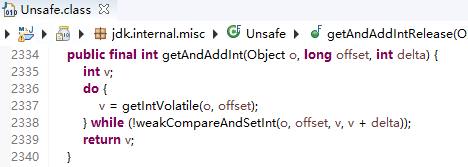先看一段代码
public class Test { public static void main(String[] args) { try { long startTime = System.currentTimeMillis(); int t = 100; CountDownLatch latch = new CountDownLatch(t); Num num = new Num(); for (int i = 0; i < t; i++) { new Job(num, latch).start(); } latch.await(); System.out.println("目标结果:" + num.getNum()); long endTime = System.currentTimeMillis(); System.out.println("程序运行时间:" + (endTime - startTime) + "ms"); } catch (InterruptedException e) { e.printStackTrace(); } } } class Num { private int num = 0; public int increment() { return num++; } public int getNum() { return num; } } class Job extends Thread { private Num num; private CountDownLatch latch; public Job(Num num, CountDownLatch latch) { this.num = num; this.latch = latch; } @Override public void run() { for (int i = 0; i < 1000; i++) { num.increment(); } latch.countDown(); } }
程序执行结果
目标结果:89887
程序运行时间:18ms
Num类中的increment方法并不是线程安全的,所以目标结果并不是期望的1000000。为了保证计数的准确性,我们需要在increment方法上加上关键字synchronized
class Num { private int num = 0; public synchronized int increment() { return num++; } public int getNum() { return num; } }
程序执行结果
目标结果:100000
程序运行时间:34ms
目标结果与期望相同,但这是否是最好的方式呢?答案是否,我们可以使用java.util.concurrent.atomic.AtomicInteger进一步提升性能。
class Num { private AtomicInteger num = new AtomicInteger();; public int increment() { return num.getAndIncrement(); } public int getNum() { return num.get(); } }
程序执行结果
目标结果:100000
程序运行时间:22ms
从结果看,程序运行时间大大缩减,这是何原理?
乐观锁和悲观锁
锁有两种:乐观锁与悲观锁。独占锁是一种悲观锁,而 synchronized 就是一种独占锁,synchronized 会导致其它所有未持有锁的线程阻塞,而等待持有锁的线程释放锁。所谓乐观锁就是,每次不加锁而是假设没有冲突而去完成某项操作,如果因为冲突失败就重试,直到成功为止。而乐观锁用到的机制就是CAS。



我们查看AtomicInteger源码得知,AtomicInteger类利用了jdk.internal.misc.Unsafe类中的weakCompareAndSetInt方法,该方法属于CAP操作(Compare and Swap),具有原子性。
与AtomicInteger相似的类还有:AtomicBoolean、AtomicLong、AtomicIntegerArray等。